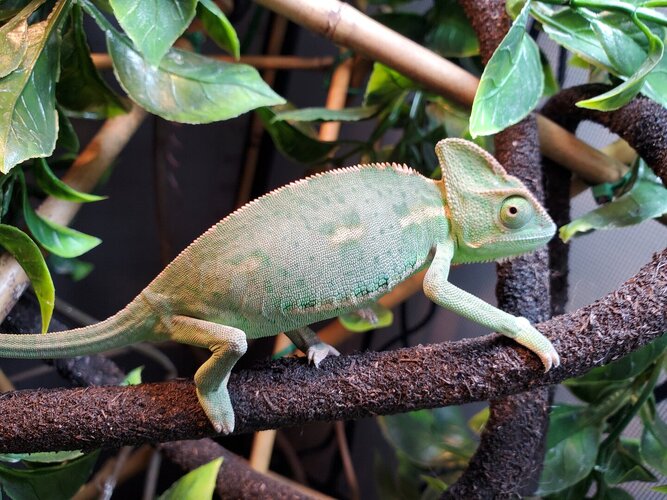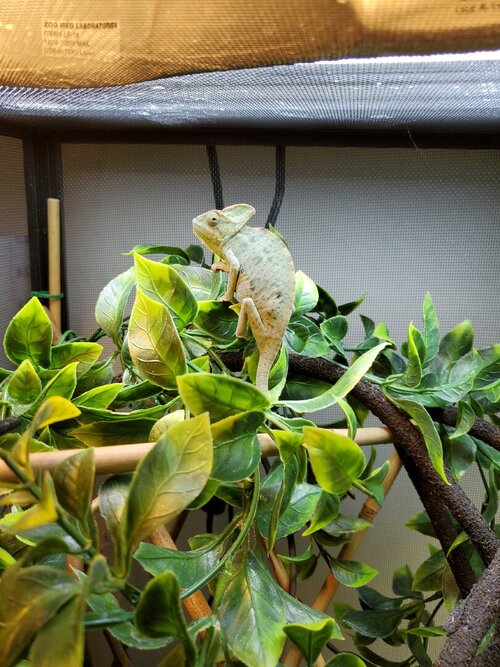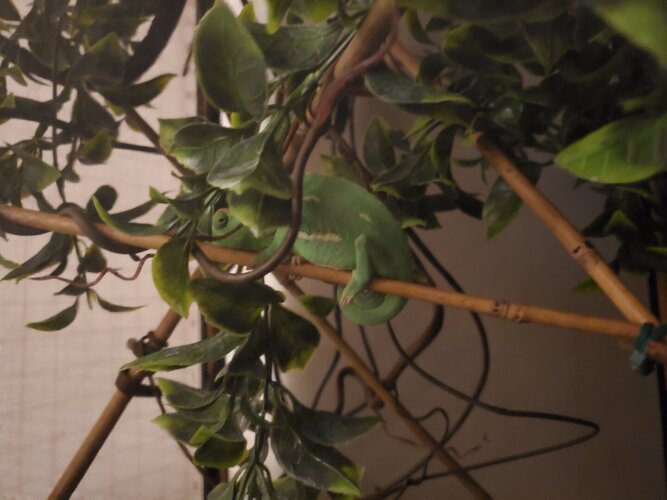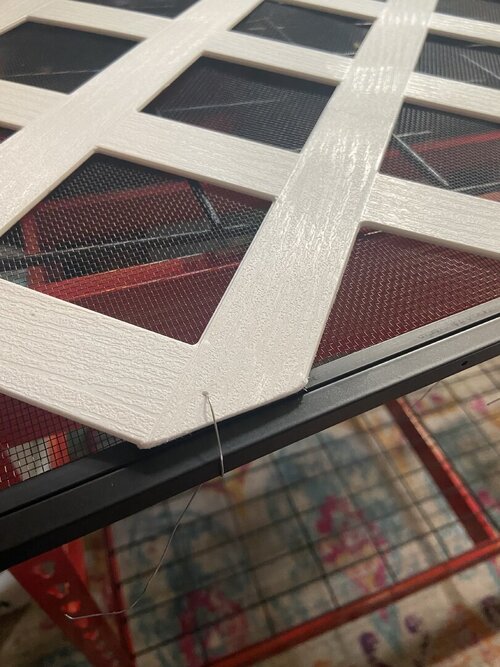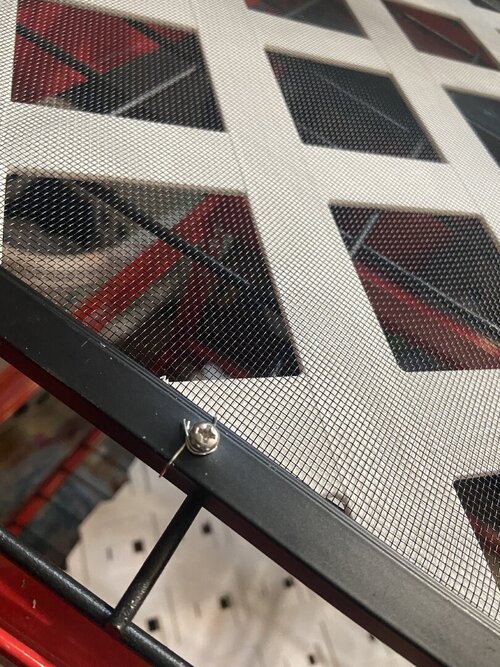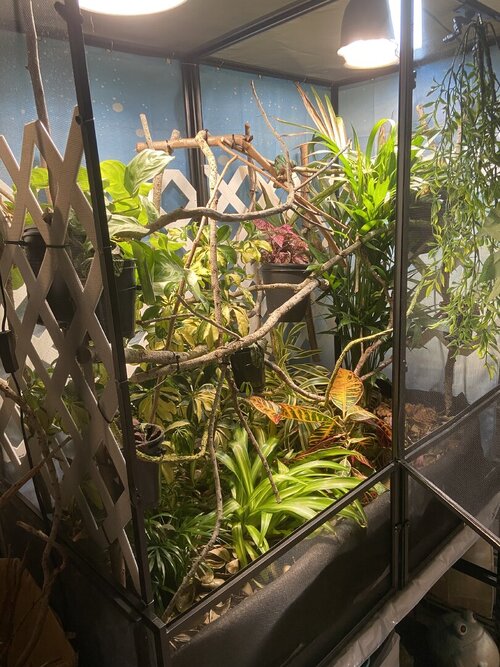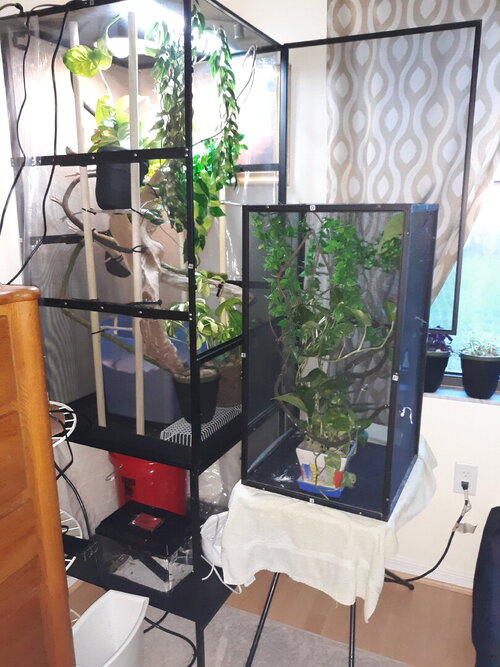Peppered
Member
Hello! I haven't introduced myself yet but I'm currently owned by a juvenile(?) female veiled chameleon named Pepper.
From what I've read, it seems recommendation is to reduce feedings/amount of feeders for juvenile females around 6 months of age, but I don't know the age of my girl. I brought her home on May 19th and she was pretty small, maybe ~4 inches in total length. I'll attach a picture of her now, she looks more like ~6 inches total length now (rough estimates, I can try and get a better look when I get home today).
Could I please get some advice on how soon I should begin to pull back on feedings?
I've been offering a variety daily, usually 2-3 different kinds bugs including: silkworms, small super worms, BSFL, dubias, red runners, crickets, and a couple of "retired" silkworm moths recently. I have waxworms that I'm waiting to turn into moths, as well. She eats anywhere from 10-20 feeders depending on the size of the bugs before she gets full.
Thank you for any and all advice
From what I've read, it seems recommendation is to reduce feedings/amount of feeders for juvenile females around 6 months of age, but I don't know the age of my girl. I brought her home on May 19th and she was pretty small, maybe ~4 inches in total length. I'll attach a picture of her now, she looks more like ~6 inches total length now (rough estimates, I can try and get a better look when I get home today).
Could I please get some advice on how soon I should begin to pull back on feedings?
I've been offering a variety daily, usually 2-3 different kinds bugs including: silkworms, small super worms, BSFL, dubias, red runners, crickets, and a couple of "retired" silkworm moths recently. I have waxworms that I'm waiting to turn into moths, as well. She eats anywhere from 10-20 feeders depending on the size of the bugs before she gets full.
Thank you for any and all advice

